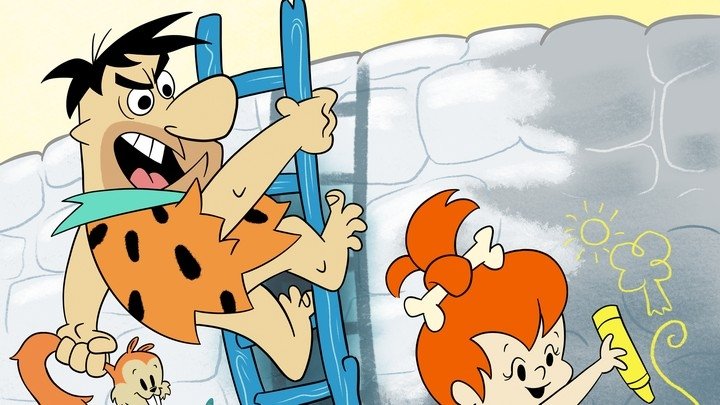Modern mini-arcade cabs put a high-gloss twist on a classic concept
The vacuum-display tabletop toys of the '80s take on fresh life in new, high-quality mini-repros.
Last year, I wrote about Replicade's Centipede reproduction cabinet, which by and large I found quite impressive. In the months since, the mini-cabinet market has all but exploded; now you can buy fake arcade machines in a huge variety of sizes... and an equally expansive range of fidelity. From keychain-sized replicas sporting crude simulations of the games they purport to recreate to Arcade1UP's disappointing three-quarter scale cabinets, I've spent some time (and money) messing around with all of them.
What I've found is that, perhaps unsurprisingly, none of these manage to recreate the authentic arcade experience without some caveats. A couple of options come close enough to work, though: Specifically, Numskull's quarter-scale Pac-Man and Replicade's sixth-scale line, which has grown to include Tempest. While these mini-machines may not provide the full satisfaction offered by a true vintage arcade machine, they balance it out by requiring far less space, costing considerably less money, and demanding none of the maintenance required to keep a 40-year-old machine running reliably.

I'm postiive my fascination with these mini-systems isn't simply the by-product of my affection for classic arcade games. They feel like the successors of the vacuum-fluorescent display tabletop games made by companies like Coleco in the early ’80s. Those systems were squat caricatures of their coin-op counterparts, with bright colorful displays and game tech that amounted to a shinier take on Nintendo's Game & Watch systems.
Some modern mini-cabinets are essentially the same thing—chunky approximations of classic cabs running emulators on LCD screens. While these higher-end models sport similar emulation-based tech inside, they do a much better job of recreating the look of actual arcade hardware in a much smaller form factor. They also incorporate a considerably higher grade of materials; both Numskull and Replicade primarily use wood and metal for their cases, which lends them a weight and solidity lacking in all-plastic devices.
Speaking for myself, I always coveted my friends' VFD tabletop systems, but they were a bit out of my family's price range at the time. Which is to say that this new wave of mini-cabinets, in effect, amounts to my clutching at the childhood baubles I missed out on as a kid. But there's value to them regardless.

Tempest, for example, appeals to me for the same reason that its predecessor Centipede did: Their arcade units incorporated now-deprecated control interfaces. It's difficult to play these games on modern systems with the unique controllers their developers built them around, and those input devices were a big part of the experience and appeal. These standalone units are able to incorporate scaled-down versions of those quirky interfaces, and while these aren't perfect recreations, they're still more satisfying than using an analog stick or touchscreen interface.
Tempest here was designed around a spinner, which allows players to move either clockwise or counterclockwise around the rim of a 3D well. Replicade's rendition works, but it also demonstrates the challenges of trying to recapture that interface in such a small scale. The arcade spinner offered loose, low-friction action that allowed players to flick the spinner and send their ship blazing around the edge of the playfield until the controller eased its way to a halt; here, the spinner stops quickly after being released, denying players the reckless thrill of careening around the screen, guns blazing.
Realistically, the tiny size of the device makes a low-friction design difficult. Someone on Twitter suggested a flywheel mechanism, but it's hard to imagine that a setup complex could be scaled down and still allow this to come in at a somewhat reasonable price point. I will say that, somewhat surprisingly, it still feels more authentic and responsive than Arcade1UP's much larger spinner mechanism on their three-quarters Tempest cabinet. This isn't a perfect imitation, but it literally could be worse.
The spinner also breaks the perfect to-scale recreation of the arcade cabinet by needing to be sized up in order to work. Unlike the spot-on design offered by Centipede, Replicade's Tempest ships with an oversized spinner knob that breaks the proportions of the cabinet. A smaller, to-scale replacement comes in the box (along with a replacement for both knob options), but the tiny spinner proves difficult to use. Again, it's just a reality of the sizing, but it definitely stands out.

Spinner issues aside, it's a beautifully made repro cabinet. The marquee, coin drop, and player select buttons light up, and the screen looks great. In fact, this is the one area where Tempest comes out unquestionably ahead of Centipede. For whatever reason, the Replicade Centipede's graphics had a fuzzy, antialiased look to them, which made the screen look slightly smeary. I expected Tempest to turn out even worse, since the arcade game used a vector monitor, a look that's notoriously difficult to recreate on LCD. But each line is rendered here with pinpoint sharpness and even manages to recreate the extra glow effect that appears at the vertex of multiple lines on a vector screen. The game looks and sound perfect, or at least so good at this tiny scale that you can't really complain.
Tempest also resolves Centipede's freakishly poor battery life, running much longer on a single charge than its predecessor did. While Replicade still has a few logistics to iron out in future mini-cabinets, I continue to be impressed with how brilliantly they've managed to recreate these beloved games in a foot-high format.

Even more impressive, though far less practical, is Numskull's new line of mini-cabinets. Where Tempest's one-sixth scale clocks in at a fairly compact foot-high design, Numskull has decided to go with a quarter-scale design that results in a much larger footprint. Its debut release, Pac-Man, is absolutely gorgeous... but it's large enough that it constitutes something of a commitment in terms of space. And cash. It's a pricier unit than Replicades' by about $50, and it takes up about 50% more desk space.
The tradeoff, however, is a solidly crafted working replica that manages to sidestep some of the unavoidable usability issues that crop up in small units. It doesn't hurt that Pac-Man has a brilliantly minimal interface, requiring only a four-directional joystick—there's no real room for fumble-fingers here, and the construction is rugged enough that it's withstood a few unsupervised play sessions with kids under 10. At 18" high, I actually find myself striking something reminiscent of the classic Pac-Man play pose while using this cabinet, with one hand on the controller and the other resting on top of the screen.
Another downside to the larger scale is that the lack of true screen resolution becomes more apparent than it is on Replicade's machines. Where Tempest looks pin-sharp, you can see fuzzy anti-aliased edges quite visibly on Pac-Man. Most people won't notice or care, but the blazing phosphor screen glow has always been one of the primary points of appeal for me when it comes to arcade games. Numskull's choice of parts doesn't quite do the trick.

Everything else about this reproduction cabinet is brilliant, though. The wood-and-metal construction gives it serious heft that help anchor the unit during extended play sessions. The cab paint and decals capture the iconic primary colors of Midway's American Pac-Man machines beautifully, too—it's an eye-catching conversation piece even before you switch on the power and its marquee and screen light up. Somewhat disappointingly, the coin slots don't light up here as they do on Replicade's machines (and on the original Pac-Man cabinet). Numskull decided to strive for authenticity in other ways, though: In order to play, you need to "insert credits" by pressing one of the coin-release buttons. It's not a completely faithful interpretation of the arcade machine, obviously, but it captures the spirit of the thing and adds an extra touch of fun to the experience of playing Pac-Man in this way.

If there's a genuine shortcoming to Numskull's Pac-Man that isn't simply nit-picking, it's that owning yet another iteration of Pac-Man isn't precisely exciting. Bandai Namco hasn't been shy in the least about republishing Pac-Man, and some verson of the game has been in circulation for purchase constantly since 1981. Compare that to Centipede and Tempest, which have long been unavailable to play with an acceptable rendition of their unique control interfaces. To my mind, the strength of these standalone units is their potential not only to reproduce classic games in a striking and enjoyable way, but also to help bring long-inaccessible game experiences back to the masses. Just as I'd like to see Replicade refine the mechanisms of its mini-cabinets for even greater fidleity, I'd also love to see Numskull apply its larger quarter-height format to games with weirder control schemes than Pac-Man's single button. Could there someday be a perfect mini-pinball replica of Baby Pac-Man? Probably not, but we can dream...
That said, Numskull has already announced a few more Namco classic cabinets at this scale, and I absolutely will be adding Galaga and Ms. Pac-Man to my collection. They may not exactly be scarce classics, but there's something profoundly satisfying about owning a genuine video game masterpiece in its original form... even if said form is a lot smaller than I remember. And I imagine I'll pick up a few more Replicade units, too, if more oddball control schemes show up down the line. These new standalone cabinets soothe the VFD tabletop itch I couldn't afford to scratch as a kid—and, despite their minor issues, they do it in a way that satisfies the perservationist stickler I've grown up to be.
Disclosure: Tempest was provided for review. Pac-Man was purchased out-of-pocket with a press discount.




